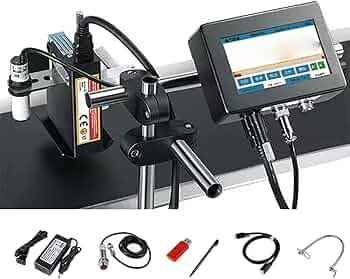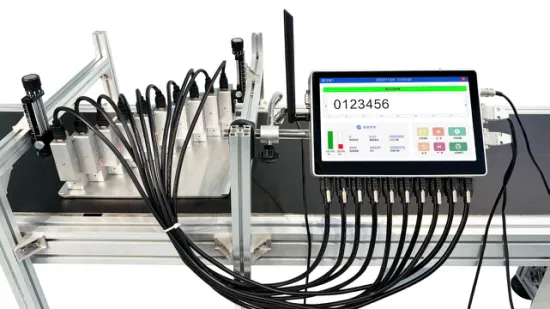Eas Eecoder Online are one of the very important tools broadcasters use for broadcasting messages, such as natural disasters, Amber alerts, and other emergency messages. Traditionally, encoders were basically only hardware-based, while through technological advancement, online encoders have also been made possible and are more adaptable for broadcasters and emergency management teams. Its compatibility with digital broadcasting, cost-efficiency, and remote accessibility give it more preference to use online EAS encoders, allowing broadcasting to access alerts from anywhere. The report explores the range of EAS encoder technology – specifically, online options, operations-based insights, and statistical usage and effectiveness data to benefit broadcasters and emergency management practitioners.
What is an EAS Encoder?
An EAS Encoder is a special device or software that lets broadcasters encode and transmit emergency alerts to the public. The alerts range from severe weather warnings to emergencies and other critical information. It works in harmony with the Federal Communications Commission’s rules and regulations so that emergency messages are communicated as fast as possible.
The EAS is vital to the public safety communications infrastructure because it permits the National Weather Service and local emergency management offices to access the public through radio and television broadcasts.
Importance of EAS Encoders
EAS Encoders play an important role in emergency communications for several reasons:
- Public Safety: The EAS Encoders alert people to possible dangers so that citizens adequately prepare an individual and his family in advance.
- Compliance: The FCC establishes the need for EAS capabilities. They require encoders to realize those regulations.
- Accessibility: Accessibility is also extremely important because EAS messages must be conveyed to each individual; disregarding some form of disability, the encoder can provide audio and other forms of visual signals.
- Real-Time Updates: Emergency Alert System Encoders will allow a real-time conveyance of emergency messages, hence providing the public with up-to-date information on developing scenarios.
- Interoperability: EAS Encoders will be compatible with other communication systems, promoting harmonization among local, state, and federal agencies charged with emergency management.
Evolution of EAS Technology

Historical Context
The Emergency Alert System was born in the 1990s as a replacement for the Emergency Broadcast System. These years have seen it undergo extreme changes to accommodate the times, adapting to technological advances and the evolution of modes of communication. The very early systems were heavily anchored on analog technology and utilized hardware-based encoders, which had limitations in terms of accessibility and functionality.
Transition to Digital and Online Systems
With the start of digital broadcasting and the use of the Internet, there has been a development that includes online encoders of EAS technology. With this in mind, modern systems aim to be more flexible and user-friendly to allow remote access and connectivity with the existing broadcast infrastructure.
Key Features of Online EAS Encoders
Online EAS Encoders have various features that make them have better functionality:
- Remote Access: This allows the user to access the alerts from anywhere around the globe as long as there is internet access.
- Simple User Interfaces: Most online encoders possess very simple interfaces that will facilitate the process of generating the alert and transmitting.
- System Integration: Online encoders often integrate with other tools meant for emergency management, such as notification systems for alerts and weather-tracking services.
- Data Logging and Reporting: Most solutions feature extensive logging capabilities, supporting alert tracking and reporting and thus meeting all regulations.
- Cost-Effectiveness: Online solutions typically reduce the need for hardware. For this reason, the cost of broadcasting will greatly decrease.
Statistics on EAS Usage
The level of EAS usage can be used to determine its effectiveness and the adoption rate. The following are some key statistics:
- Adoption Rate: According to a 2022 National Association of Broadcasters survey, over 95% of US radio and television stations utilize EAS capabilities.
- Alert Frequency: According to the National Weather Service, over 1,500 alerts are sent monthly in the nation during peak severe weather periods.
- Public Engagement: According to a Pew Research Center survey, 65% of Americans received at least one emergency alert over the past year, indicating high public engagement with the EAS messages.
- User Satisfaction: A 2023 study indicated that 88% of the broadcasters were satisfied with the EAS systems used because of improved response times and community engagement.
Benefits of Online EAS Encoders

More Flexibility and Accessibility
Online EAS Encoders allow broadcasters the flexibility that they have never had before. Users can access the system anywhere an internet connection exists, allowing them to respond quickly when out of the studio. Here, flexibility makes a difference in cases of emergency, where time becomes of prime importance.
Improved Operations
Friendly interfaces and templates of online encoders make creating an alert simple. Broadcasters can easily decide to send alerts, fill out all the details required, and transmit the messages with a little delay. This also increases the operational efficiency.
Cost Savings
Hardware-based EAS systems are costly because they involve equipment costs, maintenance, and training. In most cases, the EAS Encoder is done on a subscription basis, cutting the costs for the initial process and leaving predictable monthly expenditures. The software-as-a-service model of EAS makes it easier for smaller stations and community broadcasters to avail of it.
Improved Coordination
Online EAS systems can enhance inter-agency cooperation during emergency management. Using real-time alerts and messages by various organizations can help coordinate response activities with an all-inclusive communication strategy.
Integrated Reporting and Analytics
Most of the online EAS solutions have advanced reporting and analytics capabilities. Stations can see how alerts get delivered, statistics on their message effectiveness, and insights into the engagement of community members. This data-enabled approach can help organizations shape their emergency communications more effectively.
| Feature | Online EAS Encoders | Traditional EAS Encoders |
|---|---|---|
| Access | Remote access via the internet | Local access only |
| Cost | Subscription model | High initial investment |
| Integration | Easily integrates with other systems | Limited interoperability |
| User Interface | Intuitive and user-friendly | Often complex and outdated |
| Reporting and Analytics | Advanced reporting tools | Basic logging capabilities |
In-Depth Analysis of EAS Encoder Features

To fully understand the EAS Encoders, it is necessary to drill down into their specific features. Here are several key aspects of EAS Encoders that have made them so effective for emergency communication:
Alert Customization
Web EAS encoders come loaded with templates, preset but allow modification as intended to do so by its user and, in doing so, facilitate easy, quick transmission and delivery alerts; in return, it also helps in case such can modify the texts insert crucial details on matters or instances being given -emergency what sort -or message one could require citizens/public act following those set actions.
- Standard Alert: “Severe Thunderstorm Warning for [Location] until [Time].”.
- Customized Alert: “Severe Thunderstorm Warning for Downtown Metropolis until 8 PM. Take action now. Flash flooding is imminent.”
Multi-Language Support
Because of the varied populations in the United States, many online EAS systems now offer multi-language support. This feature is very important to ensure that residents who do not speak English get important information about emergencies.
- Statistics: According to the Census Bureau, over 21% of the population in the United States speak a language other than English in their homes. Multilingual alerting also increases public safety significantly.
GIS Integration
With many modern EAS systems integrating with GIS technology, geographic targeting of alerts is more likely to be accurate. Broadcasting will be able to determine through GIS data that the messages will be delivered to affected areas and not to those unaffected by the emergency.
- Case Study: When a hurricane alert is issued, the GIS-enabled EAS system can target counties or specific neighborhoods in the storm’s path so that the local stations can send the appropriate updates to areas within the storm’s path while excluding areas not within its path.
Accessibility Features
- EAS Encoders that exist on the web now put emphasis on access by persons with disabilities. Audio descriptions, visual alerts, and support via TTY ensure that information on any kind of emergency is available to every member of society.
- Visual Alerts: These involve text alerts displayed on a screen to the deaf. Audio Descriptions: These are audio alerts that alert through the description of a scenario during an emergency to cater to the blind. EAS in Different Emergencies
- Knowing the functions of EAS Encoders about the different types of emergencies allows organizations to create a focused message to their public. Here are some ways EAS is applied during the different scenarios:
Extreme Weather Warnings
EAS is one of the most commonly used means to transmit extreme weather warnings. Examples of extreme weather warnings include tornado watches, flash flood warnings, and winter storm warnings.
- Statistics: NOAA records reveal that over 30% of EAS alerts are related to weather.
- Application Example: A tornado warning could be broadcast over the EAS to inform people living in the area to seek shelter as they may face a threat immediately.
- EAS also transmits: Amber Alerts to alert the public to abducted children; such alerts are created to invoke the public to provide immediate assistance in locating a missing child.
- Statistics: Amber Alerts have successfully retrieved over 1,000 children since its implementation by the National Center for Missing & Exploited Children
Public Safety Emergencies
- EAS can also notify citizens of other types of emergencies, such as when an active shooter is involved, when hazardous materials are exposed, or when civil unrest occurs.
- Example: With an active shooter, a resident should lock doors and get away from windows with an EAS message
- Technical Requirements for Implementing an EAS Encoder Online or Analog
- Implementing an EAS Encoder in any one of the online or analog platforms requires very few technical requirements. The following are among some musts to discuss:
Network Infrastructure
Institutional internet connections should be fast and reliable enough to support EAS operations on the Internet. Network breakdowns severely affect the capability of issuing emergency alerts.
- Recommendation: Provide a redundant internet connection or other backup forms of communication, like satellite internet, in case internet service is disrupted in an emergency.
Compatibility with Existing Systems
When selecting an EAS encoder, organizations should consider whether it can be integrated with their broadcast system. This means that an EAS encoder should enable you to interface with other tools or emergency management tools, such as weather monitoring systems, among others, or even alert notification services.
Compatibility Checklist
- Test software integrations
- Review hardware compatibility
- Be on the lookout for training for users 3. Training and Familiarity of the user
User training is required so that the personnel can effectively operate the EAS Encoder in an emergency. The complete training courses should cover all the system functionalities, emergency protocols, and troubleshooting procedures.
Best Practices
- Regular drills in emergencies.
- Continued training on updates or changes in the system.
Case Studies on EAS Encoder Implementation
Real-life case studies can serve as a rich source of information on how organizations have implemented EAS Encoders and the lessons learned from such experiences.
Case Study 1: City of Atlanta
The City of Atlanta initiated an online EAS Encoder in 2020. It integrated its existing notification network with a real-time data feed provided by the National Weather Service.
- Result: The municipality saw a 40% increase in promptly delivering alert messages during dangerous weather events. This system also included easy changing of alert messages with altered circumstances.
Case Study 2: Radio Station in Florida
The Florida radio station applied an Internet-based EAS Encoder to enhance the emergency broadcasting capability of this local radio. The problem was that they could not reach diverse populations, for instance, whose primary languages were not their official working language.
- Outcome: With their implementation of multi-language alert support in their alerts, the station boosted public involvement and achieved positive community opinions regarding the station’s alert system.
Also Read More: How Can You Find the Perfect New Homes in Damascus, MD?
Future Trends of Emergency Communication Technology

As technology keeps evolving, then so do emergency communication tools. EAS is likely not an exception to future changes; thus, below are trends expected shortly regarding EAS
Artificial Intelligence and Machine Learning
AI and machine learning will transform emergency communication with advanced predictive analytics. The ability of these technologies to analyze historical data and predict the possibility of an emergency occurrence allows organizations to prepare alerts in advance.
- Possible Use Case: AI algorithms might find patterns in weather data, automatically generating alerts on the potential occurrence of severe weather through predictive modeling.
Mobile Alert Systems
More people are using mobile alert systems, which employ smartphone technology, in order to reach the right people with the right messages, depending on their location. This can be done effectively by targeting specific alerts.
- Statistics: According to the Pew Research Center, more than 85% of Americans own smartphones, making mobile alerts a very effective communication tool.
- Social Media IntegrationAnother emerging trend is the integration of EAS with social media platforms. Organizations can leverage social media to send alerts fast and reach a larger audience, engaging the public more effectively.
- Example: When there is an emergency, organizations can post alerts on Twitter and Facebook, telling their followers to tune in to their broadcasts for further details.
Best Practices in Using EAS Encoders
Organizations that utilize EAS Encoders should follow the best practices below to maximize efficiency:
Updated Contact Lists
Constant updating ensures that emergency alerts reach the right individuals or community members. Set up routines for changing the lists often, including replacing contact details or personnel.
Test the System Regularly
Testing the EAS system is necessary to ensure it functions when required. Testing must simulate different emergency scenarios that test the response time and reliability of the system.
Involve the Community
Effective emergency communication occurs only when there is a positive relationship with the community. Engage the residents through community meetings, social media, and public forums on the importance of the EAS system.
FAQs About EAS Encoder Online
What’s an EAS Encoder, and why care?
An EAS encoder is a hardware or software component that originates and routes emergency messages to the community. Both public safety and governmental regulation must deliver real-time information in an emergency.
How is an Eas Eecoder online Operative?
The Eas Eecoder online functions through an internet-enabled interface, creating, encoding, and transmitting notices based on whatever platform one uses to reach the Internet. It’s quite efficient when it comes to emergency messaging.
Do Eas Eecoder online meet FCC requirements?
Yes, reputable Eas Eecoder online are designed to meet FCC requirements and standards for emergency broadcasting. Compliance is important when choosing a system.
What advantages are there for Eas Eecoder online over older systems of traditional EAS encoders?
Eas Eecoder online are considered modern ways of emergency communications compared to older hardware systems, which have flexibility, lower cost, easier collaboration, and superior reporting.
Can an online EAS Encoder be integrated with other systems?
Many online EAS Encoders can integrate with other emergency management tools and systems to enhance overall operational efficiency and coordination during emergencies.
How do I select the correct online EAS Encoder?
To find the best Eas Eecoder online, check the cost, user interface, regulations, integration features, and customer support available. Comparing all these aspects will help decide which fits your organization the best.
The Future of EAS Technology
The future of EAS systems seems bright. Some of the trends are as follows:
More Automatic Alerts
The alert system will be automated in most areas, which will automatically generate alerts at specific triggers, such as severe weather conditions. Then, it will be able to respond faster without manually intervening.
Connectivity with Social Media
With the increasing use of social media in researching information during emergencies, such sites will probably be combined with EAS systems. This will expand the sharing of alerts, thereby disseminating critical information to an audience where they are best engaged.
Geographic Targeting Increased
Such allows advance geographic targeting, which may issue alerts in very precise locales or demographics and can reduce when inappropriate alarms increase the importance and relevance of messages.
There will be inclusiveness
EAS messages should come to all people of disability status. Further features would add to the systems through audio description, visual alerts, and multilingual support.
Increased Partnership with High-Tech Companies
Improved features will likely make better engagements for providers of EAS technologies with high-tech firms. That would, in turn, result in highly unique technological solutions that could, for sure, ensure much stronger emergency communication by taking into consideration aspects of artificial intelligence, machine learning, and big data analysis.
Conclusion
No words are enough to emphasize the significance of Eas Eecoder online, particularly Internet-based solutions, in the rapidly changing world of communications. They provide critical infrastructural support for public safety through timely and effective communication of emergency messages. Therefore, the broadcast industry and the emergency management agencies must keep themselves abreast of the recent developments in EAS technology in the ongoing race of scientific discoveries to prepare communities and respond to emergencies.
Investment in an online Eas Eecoder online will offer deep discounts, flexibility, and simplicity. Knowing such features would simplify emergency communication solutions by enhancing the broadcast’s readiness to face any challenge that will come their way.
Also Read More: Black Marble Fine Technology


